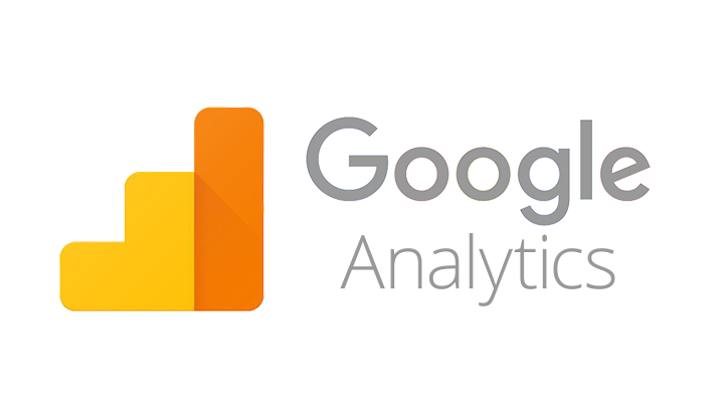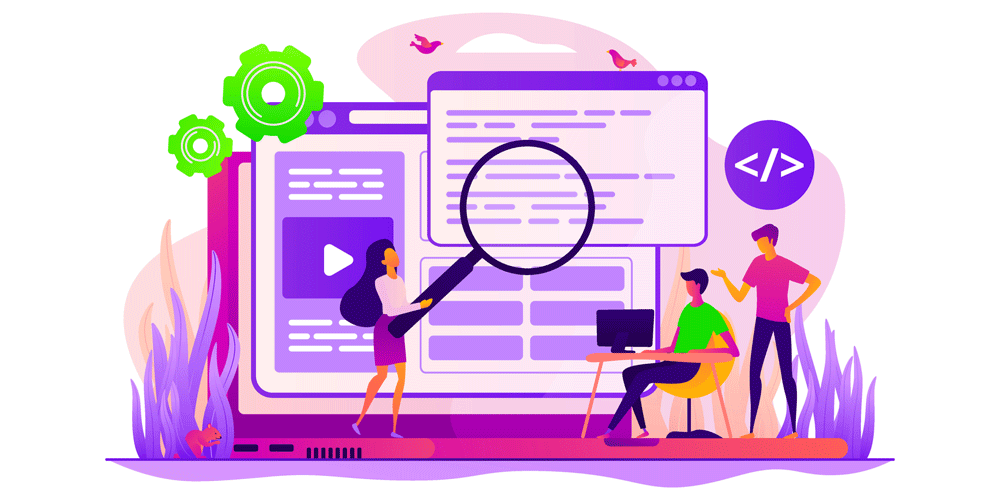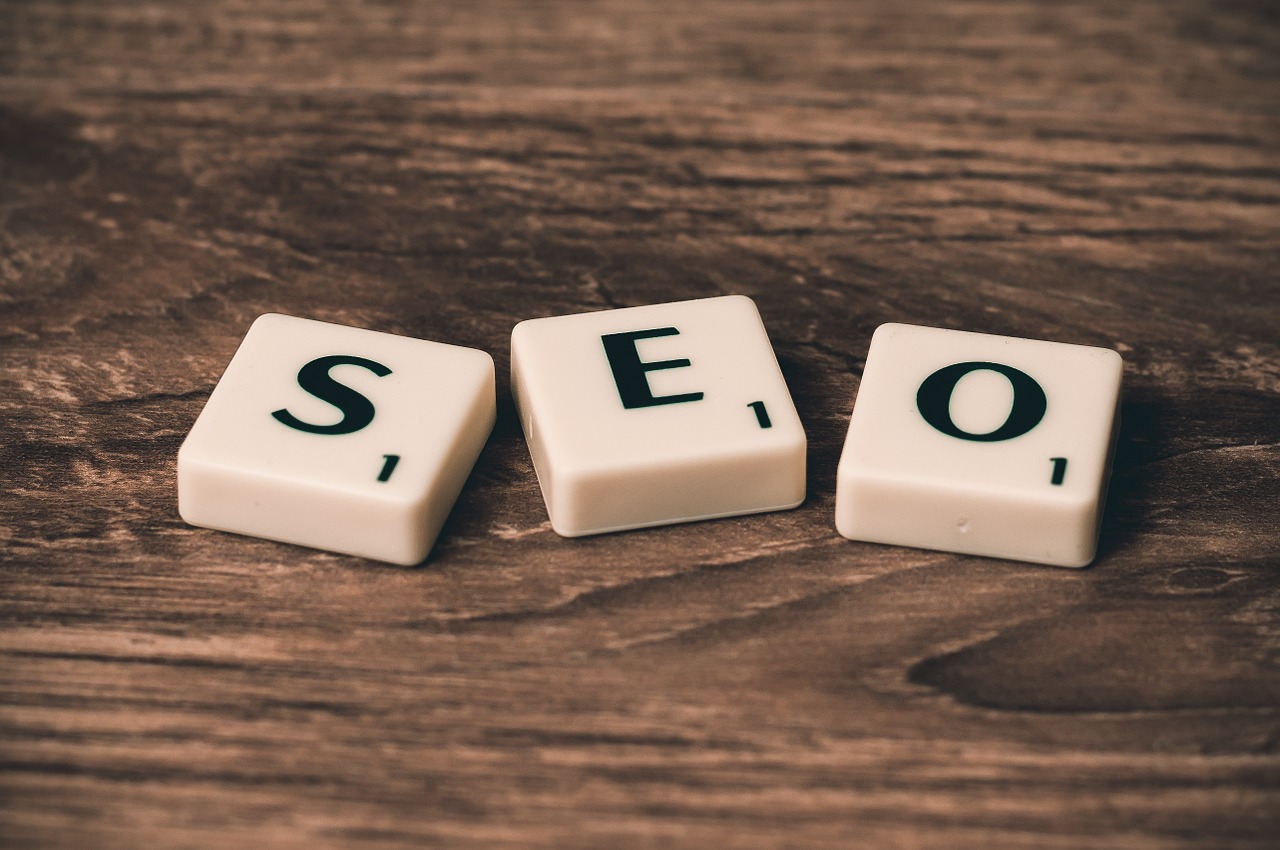
The rel = ”nofollow” tag is one of the simplest HTML tags ever and is important if you do SEO. This guide will tell you everything you need to know about nofollow links.
When caring about your website’s performance on search engines, knowing when and when not to fall back on the nofollow tag is critical.
I will also explain how nofollow links were created, how they help with search engine optimization and how they can be used correctly to protect your website from a dreaded Google penalty.
But first let’s go over the basics.
What are nofollow links?
Nofollow links are hyperlinks with a rel = ”nofollow” tag.
These links do not affect the search engine ranking of the destination URL because Google does not transmit PageRank or anchoring text about them. In fact, nofollow links aren’t even crawled by Google.
Nofollow vs. Follow Links
Nofollow and follow links look the same to the average web user.
The green text in this sentence is a follow link that Google can follow. The green text in this sentence, on the other hand, is a nofollow link that Google cannot follow. The difference between the two can only be seen by looking at the HTML code.
Follow:
<a href="https://seorankking.de/">grüne Text</a>
Nofollow:
<a href=https://seorankking.de/ rel=“nofollow”>grüne Text</a>
The HTML is identical except for the addition of the rel = ”nofollow” tag.
It is also possible to nofollow all links on a website by placing a robots meta tag with the value “nofollow” in the header. However, the nofollow tag is more often used manually, as it allows one to nofollow certain links while remaining follow links.
Not sure why you should do this? Time for a little history lesson.
How did the rel = “nofollow” come about?
Google originally introduced the nofollow tag in 2005 to combat comment spam.
“If you are a blogger (or blog reader) then you probably know people who are trying to increase the search engine rankings of their own websites by posting blog comments with links like” visit my medicines website for discounts ” compose. This is called comment spam. We don’t like it either, so we tested a new tag that aims to prevent spam in the future.
From now on, when Google sees the attribute (rel = ”nofollow”) on hyperlinks, these links will not be recognized when we rate websites in our search results . It’s not a negative vote for the site the comment was posted on; it is just a way to ensure that spammers do not get any benefit from misusing public areas such as blog comments, trackbacks, and referrer lists. “
Soon after, Yahoo , Bing, and other search engines also announced they were joining the nofollow day.
The interpretation of nofollow varies somewhat depending on the search engine. Here is a table of the differences.
These days, WordPress adds the nofollow tag to links in comments by default, and so do many other CMS. Even if you’ve never heard of a nofollow link before, chances are that any spammy commenters on your blog are unlikely to get any SEO benefit from their efforts.
However, if you’re concerned that comments won’t be nofollowed, check out the following:
- Find a comment with a link
- Right-click the link
- Click on “Search element” (Firefox) or “Examine” (Google Chrome)
- Take a look at the highlighted HTML code
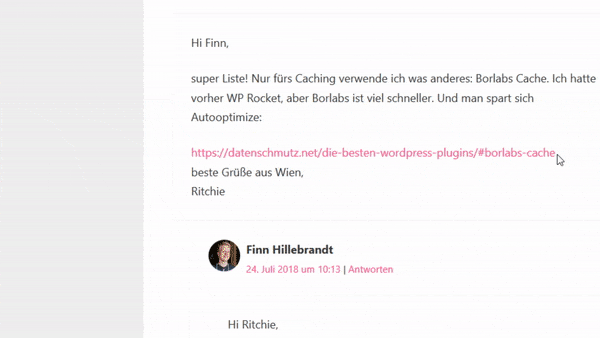
Uncomfortable digging in HTML code? Install the nofollow Chrome extension , which will visibly highlight all nofollow links while you are on the web.
Back to our history lesson.
2009: Google combats PageRank sculpting
PageRank flows through websites through internal links .
Example:
Some of the PageRank from this article flows to other pages on our website via hyperlinks like this one. In general, a higher PageRank corresponds to a higher ranking. Google’s Gary Illyses confirms that.
However, PageRank is only transmitted via follow links, not via nofollow links.
This has always been the case, but the way PageRank is shared between follow links on a page has changed over the years.
Before 2009 it worked like this:
If you had three links on a page and one of them was nofollow, then the entire PageRank was split between the two follow links.
Unfortunately, some people began to take advantage of this technique to manipulate rankings by modeling the flow of PageRank around their pages.
In other words, they set nofollow links for unimportant pages in order to get the maximum transfer of PageRank to their money making pages.
Google then announced changes to stop this method in 2009:
“So what if you have a page with“ ten PageRank points ”and ten outbound links, and five of those links are nofollows? […] Originally, two points would have flowed to PageRank for each of the five links without nofollow […] More than a year ago, Google changed the way the PageRank flows, so that one point was added to PageRank for each of the five links without nofollow would flow . “
Here is a before and after illustration:
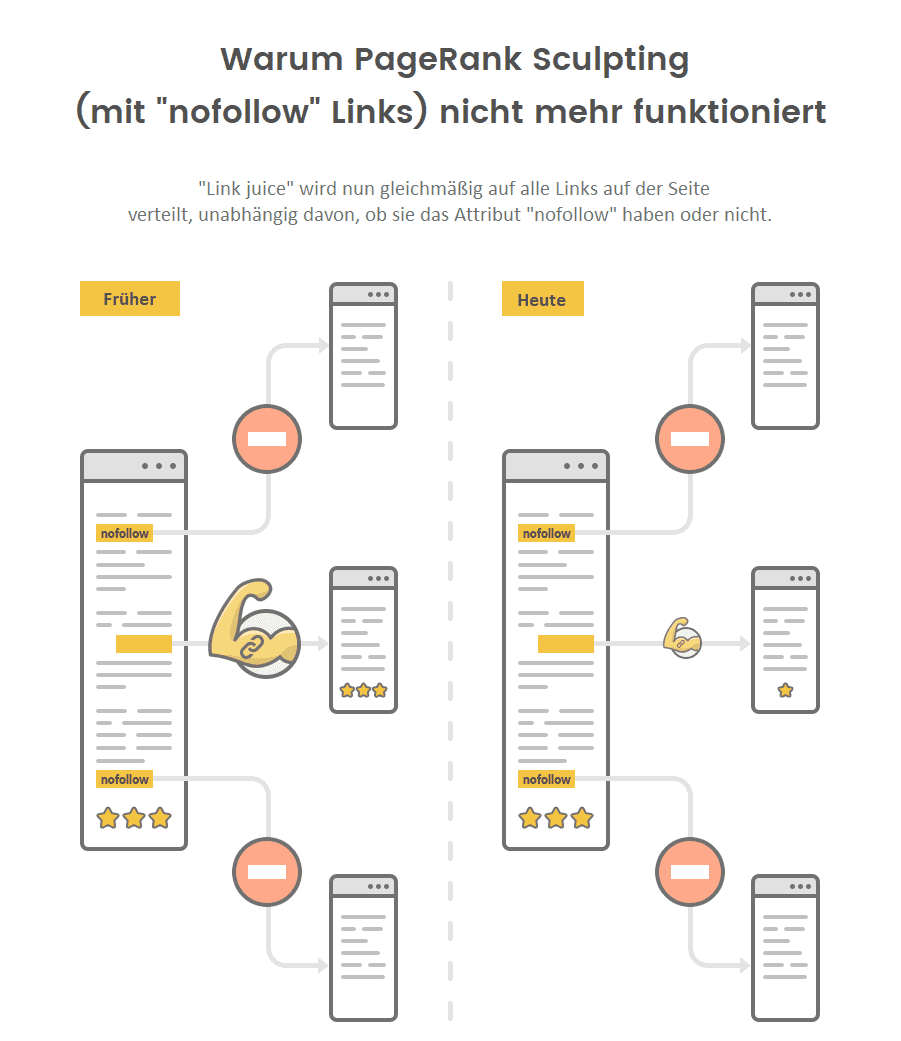
PageRank is a complex topic. It’s been ten years since Google made this change.
While they haven’t publicly announced any further changes to how PageRank works in recent years, it is very likely that at least some changes have taken place behind the scenes.
While PageRank sculpting has been eliminated, nofollows can help crawl prioritization for some internal links, as Google doesn’t crawl / search nofollow links .
But this is a slightly more advanced topic, so I won’t go into it any further here.
Since 2013: Google combats paid links
Google classifies bought or sold links related to PageRank as a violation of their webmaster guidelines .
Hence , all paid links should be nofollows .
This has been the case for many years, including well before 2013.
However, Google became increasingly concerned about the impact of undisclosed paid links on their algorithm … and they have been ever since.
Matt Cutts delves deeper into the arguments for disclosing paid links in a 2013 video .
To sum it up: Google wants to reward honestly earned links, not paid links.
“People consider links to be editorial votes. They connect with something because it arouses passion in them. It’s something that is interesting. You want to share it with friends. There’s a reason they want to highlight this particular link. “
The problem is, some paid links look no different from honest links. Think about the difference between a link in a paid review and a link in an unpaid review.
At first glance, both links will look identical. So there has to be a way to reveal the paid link to Google.
Think of it this way: There are two ways to get an Oscar:
- Option 1 : Live the acting, continuously improve your skills and work hard for years.
- Option 2 : Buy 6 for € 8 on Amazon .
The nofollow tag (on paid links) is to Google what the € 8 sticker on the bottom of your fake Oscar is to your friends: a sign that you have not legitimately earned it and therefore deserve no credit for your manipulative efforts has.
Since 2019: Google introduces new rel attributes
In order to better assess the importance of links on a page, Google introduced two new rel attributes in addition to the classic nofollow in September 2019 :
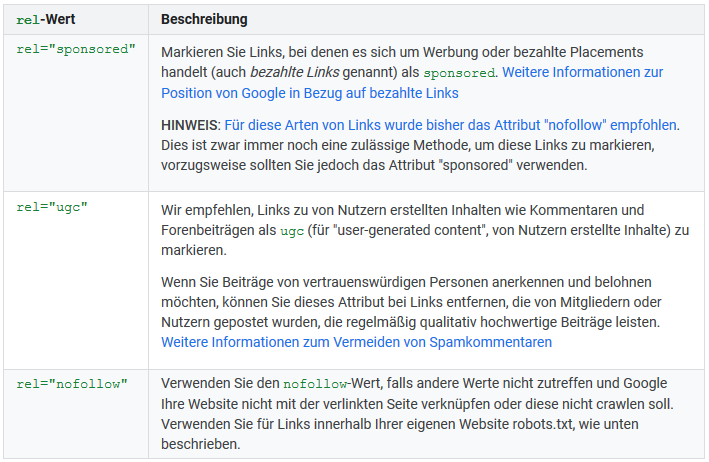
The updates clearly show how important it has become for Google to limit links.
Do nofollow links help with SEO?
Let’s quickly recap what Google says about the way they handle nofollow links:
“Google does not transmit PageRank or anchor text via these links.”
That seems clear enough until you read the sentence that precedes it:
“ Generally we don’t follow them . This means that Google does not transmit PageRank via these links or anchor any text. “
In general, I think this statement couldn’t be more obscure, and suggests that in some cases they also follow nofollow links.
Nobody knows what kind of cases these might be.
Some believe that any links not listed still carry PageRank. Some think that Google applies PageRank to some, but not all, of the nofollow links. Others believe that people read too much into language that hasn’t changed in seven years .
At the beginning of 2019, ahrefs examined 44,589 SERPs to see whether there was a connection between the Google rankings and various backlink attributes – one of them was the number of follow backlinks.
What was noticed was that the correlation for the number of “dofollow” backlinks is somewhat weaker than that for the total number of backlinks.
This could be an indication that Google recognizes some nofollow links from strong sites more than links from weak sites.
The main aim of this study was not to analyze the effects of nofollow vs. follow links and, as such, they certainly made no effort to account for this factor.
But even if we assume that nofollow links have no direct impact on SEO, they can still have an indirect impact because:
1. They help to expand your link profile
Natural backlink profiles are diverse.
Some links are being followed and some are not. This fact is inevitable as some people will inevitably nofollow links to you … no matter how much you wish they didn’t.
Also, most of the backlinks you get from the following sources are nofollow links:
- Social networks (Facebook, Twitter, YouTube, etc.)
- Forums (Reddit, Quora, etc.)
- Press releases
- Guest books
- Wikipedia (note: anyone can edit a Wikipedia page)
- Pingbacks
- Directories
Long story short, if a website only has backlinks or a noticeably high percentage of follow backlinks, then that is a sign that something is wrong.
To check the ratio of follow vs. nofollow links for a website, you can use SEMrush’s backlink analytics tool .
If you click here , you will be taken directly to the tool and you can check every website:
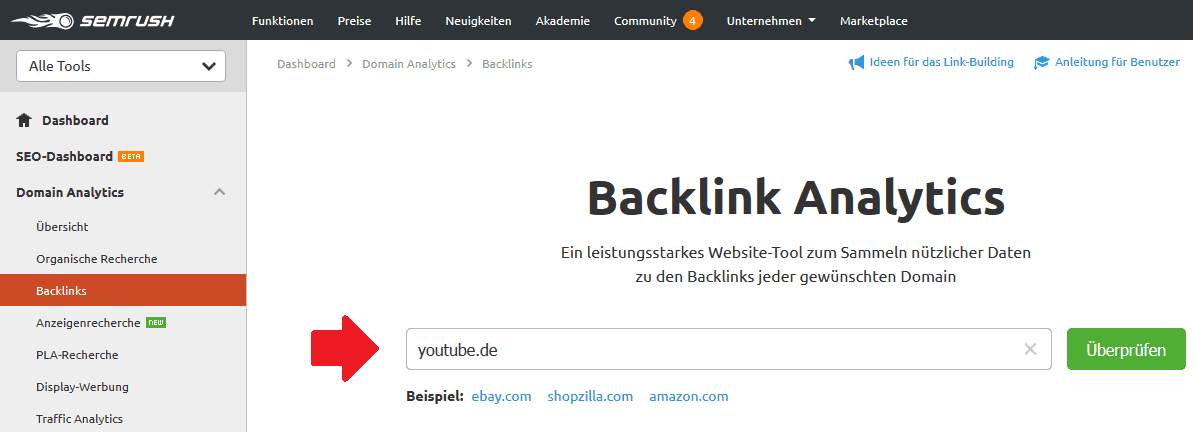
As soon as you click on “Check”, an overview is displayed with a variety of information about the website’s backlinks. If you scroll down here, you will find a simple overview of the distribution between follow and nofollow links.
Here using the example from youtube.de:
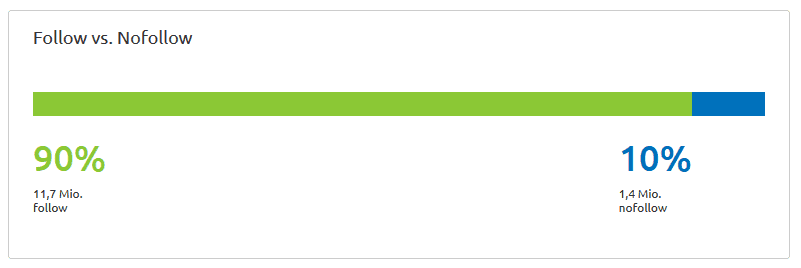
It looks like 90% of referring domains (linking websites) are following on YouTube.
Is that good or bad? To be honest, as long as there is some diversity here, that’s a good sign.
What you don’t want to see is 100% “dofollow” or something like that, because that’s a clear sign of manipulation. From experience I would say that anywhere between 60-90% is normal – but this range is not mandatory.
It really comes down to the niche and many more factors. On eBay or Amazon, for example, the relationship will be completely different because mainly products are linked here.
2. They bring in traffic and thus more follow links follow
Links aren’t just useful for SEO purposes. They also drive traffic through referrals.
That is why many are active in forums.
If you’ve never heard of forums like Quora, they are Q&A websites where anyone can answer the questions people ask. Within these answers, many pages allow links to relevant resources.
Since all outbound links on Quora are nofollow, they unfortunately have no direct SEO effect.
But here’s the interesting part:
Follow links are often created through nofollow links. It usually happens as follows: Readers become aware of the post in forums, some of the interested readers are directed to their own page with the nofollow link and some of them use these links as a follow link.
So remember: in order for someone to link to you, three things must happen in this order:
- They see your contribution
- They like your post
- They recommend it to others (via links on their website)
Since nofollow links can help with this first step, they are often a trigger for follow links.
3. You can protect against Google penalties
Sometimes there are valid reasons to pay for links.
When a website is getting a lot of traffic, buying a sponsored post on that website can make total sense. And if you’re paying good money for an achievement, then you’ll likely want to add a backlink so that readers can easily find your website.
The problem? Google says paid follow links are against webmaster guidelines.
This means that the SEO community is generally divided into two camps:
- Those who believe that Google can algorithmically accurately identify paid links.
- Those who believe that Google can not identify paid links .
Which camp is correct is a discussion for another day.
For now, let’s assume Camp 2 is correct and that Google is having trouble identifying all of the paid links. That means you can safely buy and sell links to the content, right?
Not so fast.
Google has a tool that allows anyone to report a website for buying or selling links:
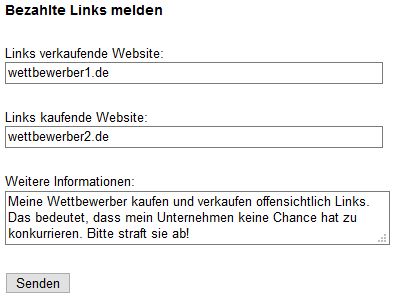
Translated: It may not be Google that you should fear – but your competitors.
Think about it: if a competitor sees that you are well placed for their target keyword and they use a tool like SEMrush’s Backlink Analytics, they’ll find your paid links in no time.
Then why shouldn’t they report you?
If it results in Google’s webspam team taking a look at your website, discovering the paid links, and applying a manual penalty, then that’s one less competitor to compete with on the SERPs.
That brings us to the next topic.
How to check a website for nofollow link issues
Having follow backlinks that violate Google’s webmaster guidelines is risky.
The same goes for outbound links on your website that shouldn’t be followed.
But it’s not just about Google’s annoyance (i.e. penalties). It is also possible that certain internal nofollow links are hindering your SEO performance.
Below is a quick audit to identify and fix such issues.
1. Watch out for follow backlinks with keyword-rich anchors
In most cases, people will not be using exact anchor texts when linking to your page. Therefore, follow links with exactly matching anchors can be a sign of the manipulation of backlinks.
To find them, use the anchor report in SEMrush’s Backlink Analytics .
Backlink Analytics> enter domain> anchor
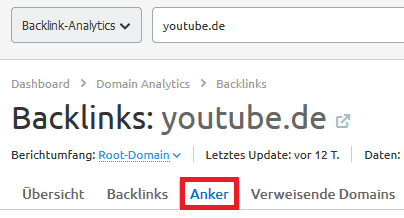
Now you can look at a list of all anchors and take a close look at any conspicuous links. To do this, you can simply click on the number of backlinks for eye-catching anchor texts:
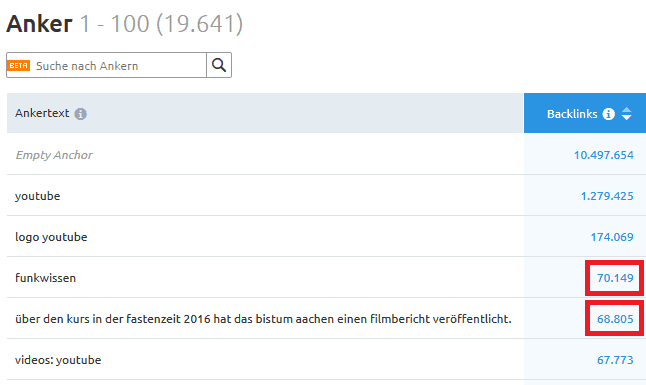
You will then be shown a list of all the links to this anchor. Here you only need to filter the backlinks according to “follow” links and you can exclude lost links in the advanced filter:
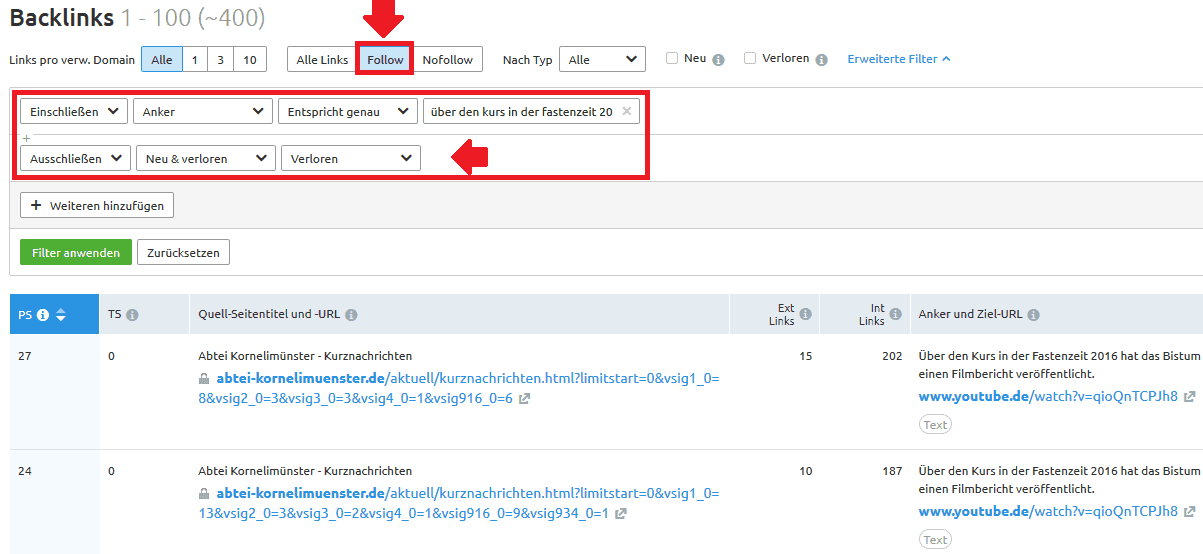
Now it’s time to check the links and convert them to nofollow links if necessary.
Here are a few rough guidelines for dealing with different types of links:
Bought links on low quality websites. Request that the link be removed or used as a nofollow. Deny backlinks to this domain with Google’s Disavow Tool if they don’t.
Bio links in guest posts. Have you ever used keyword-rich anchors in your bio in a guest post? Ask the person responsible for this website to swap the keyword-containing link for one with your brand name. Or, if you prefer to keep the anchored link and continue using it as a nofollow.
Widget links. Change the HTML of your widget to use nofollow links. Ask those who have already embedded your widget not to follow the link.
Cross-page links. Request that the link be nofollowed or include your brand name.
Note that exactly matching link texts do not always indicate poor quality or paid links. Such links can appear naturally and under legitimate circumstances.
That’s why you should always make sure to thoroughly research links before rejecting them or asking for them to be nofollowed.
If you don’t, you could end up doing more harm than good.
2. Watch out for internal nofollow links
Internal links should never be nofollowed. Unless they refer to unimportant pages or which you want to exclude from the search engine index.
To find internal nofollow links, use SEMrush’s Site Audit Tool .
After you have entered your URL, your entire website will be checked for various on-page areas. When the scan is finished, you can click on “Internal Linking” in the overview:
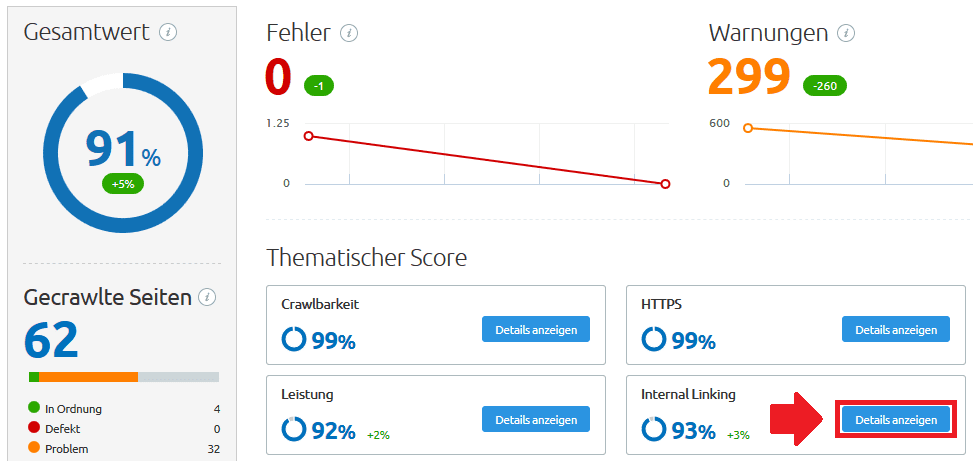
On the right side you will then find a structured overview with errors, warnings and notes. In the warnings, the point with the internal nofollow links is listed:
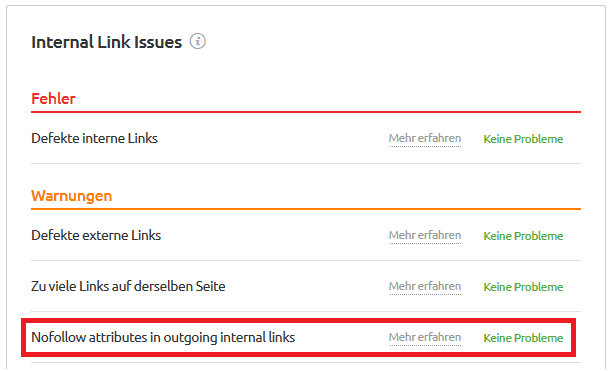
If you’re seeing a number here with problems, don’t worry. In that case, just click on the number and all nofollow links from and to the respective page will be displayed. If there are pages that you deliberately do not follow (e.g. a shopping cart or login page), only those should be displayed here.
However, if there is no obvious reason for the links to be nofollowed, remove the nofollow tag.
Tip: Do a backlink audit and delete toxic links
If you are already in the process of converting follow links into nofollow links or removing accidental nofollow links, then you should also have checked your general backlinks. Because what is even more urgent than switching from follow to nofollow links or vice versa is to remove harmful links.
If you haven’t looked into this yet, it won’t take much time. There is a quick and easy way to identify and eliminate toxic backlinks – with the Backlink Audit Tool .
If you check your domain with the Site Audit Tool, you can also use the Backlink Audit Tool free of charge for the same domain and have it checked for toxic links.
After the scan, you will be shown all dangerous links so that you can contact the website operator directly from the tool.
If the site operator does not react, you can export the toxic links from SEMrush and insert them into Google’s disavow tool . The Google tool then ensures that the backlinks no longer have any influence on your website (so you should only enter toxic links here so as not to lose any rankings).
Closing word
Nofollow links play an important role when it comes to SEO.
Hopefully this guide has successfully provided you with the knowledge you need to make nofollow links work for you … not against you.
Before I summarize, I have one last – probably very obvious point:
If you are actively building links to your website, then it makes sense to prioritize the building of follow links. These are the ones who pass on the PageRank and have a direct influence on SEO.



